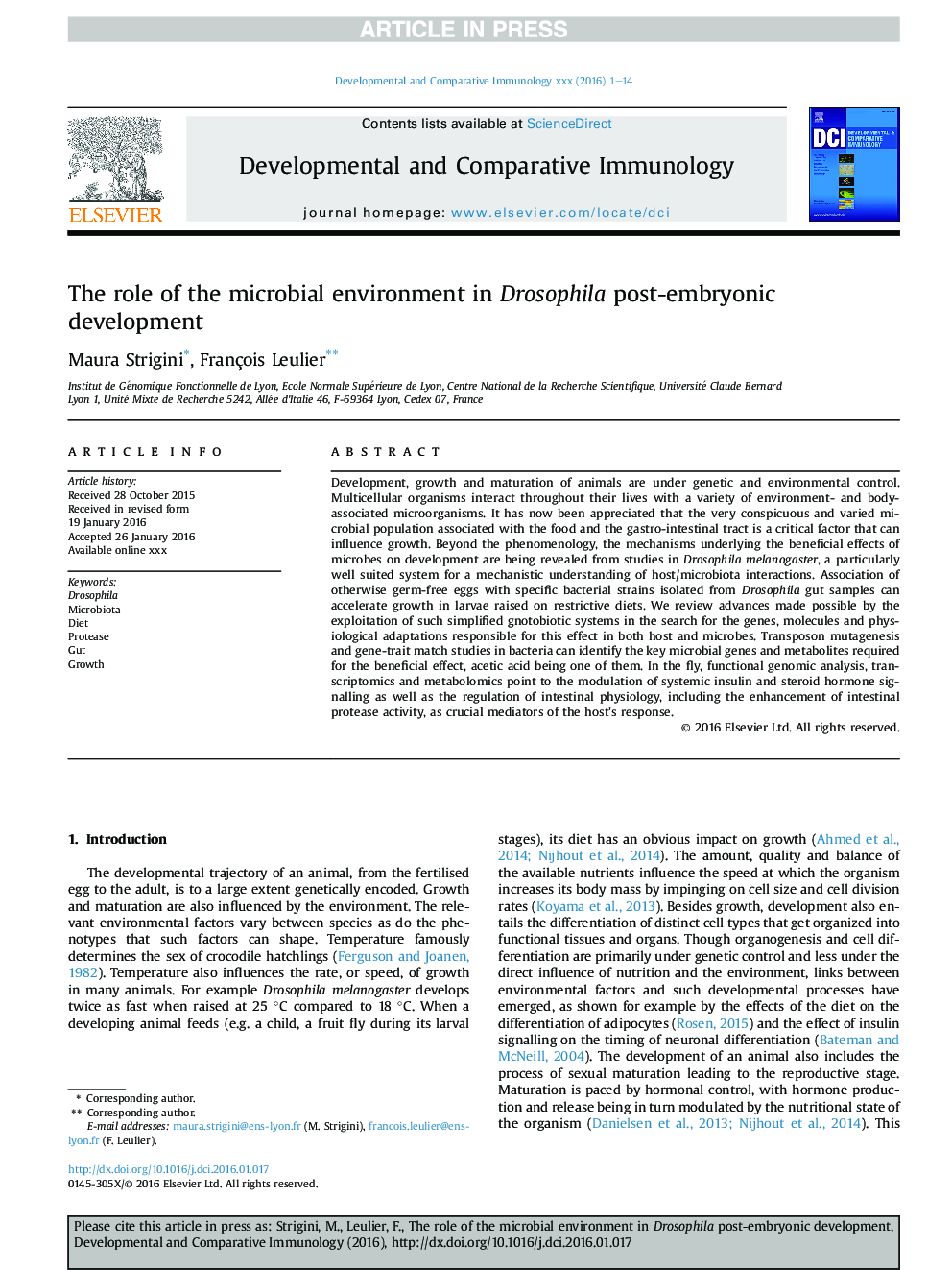| کد مقاله | کد نشریه | سال انتشار | مقاله انگلیسی | نسخه تمام متن |
|---|---|---|---|---|
| 8497897 | 1553568 | 2016 | 14 صفحه PDF | دانلود رایگان |
عنوان انگلیسی مقاله ISI
The role of the microbial environment in Drosophila post-embryonic development
دانلود مقاله + سفارش ترجمه
دانلود مقاله ISI انگلیسی
رایگان برای ایرانیان
کلمات کلیدی
موضوعات مرتبط
علوم زیستی و بیوفناوری
بیوشیمی، ژنتیک و زیست شناسی مولکولی
زیست شناسی تکاملی
پیش نمایش صفحه اول مقاله

چکیده انگلیسی
Development, growth and maturation of animals are under genetic and environmental control. Multicellular organisms interact throughout their lives with a variety of environment- and body-associated microorganisms. It has now been appreciated that the very conspicuous and varied microbial population associated with the food and the gastro-intestinal tract is a critical factor that can influence growth. Beyond the phenomenology, the mechanisms underlying the beneficial effects of microbes on development are being revealed from studies in Drosophila melanogaster, a particularly well suited system for a mechanistic understanding of host/microbiota interactions. Association of otherwise germ-free eggs with specific bacterial strains isolated from Drosophila gut samples can accelerate growth in larvae raised on restrictive diets. We review advances made possible by the exploitation of such simplified gnotobiotic systems in the search for the genes, molecules and physiological adaptations responsible for this effect in both host and microbes. Transposon mutagenesis and gene-trait match studies in bacteria can identify the key microbial genes and metabolites required for the beneficial effect, acetic acid being one of them. In the fly, functional genomic analysis, transcriptomics and metabolomics point to the modulation of systemic insulin and steroid hormone signalling as well as the regulation of intestinal physiology, including the enhancement of intestinal protease activity, as crucial mediators of the host's response.
ناشر
Database: Elsevier - ScienceDirect (ساینس دایرکت)
Journal: Developmental & Comparative Immunology - Volume 64, November 2016, Pages 39-52
Journal: Developmental & Comparative Immunology - Volume 64, November 2016, Pages 39-52
نویسندگان
Maura Strigini, François Leulier,